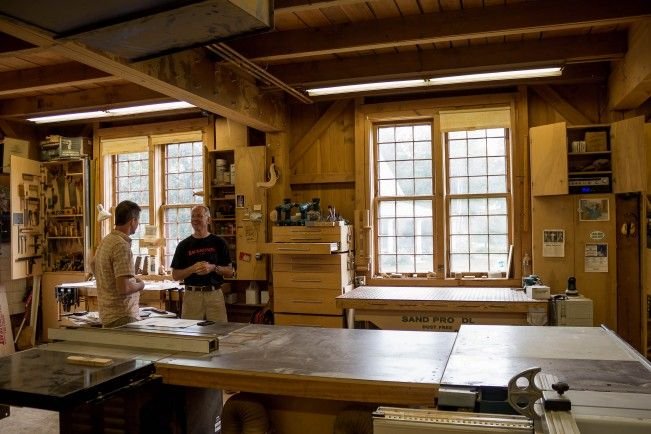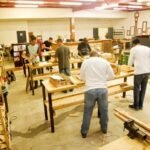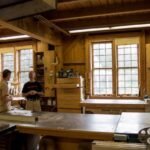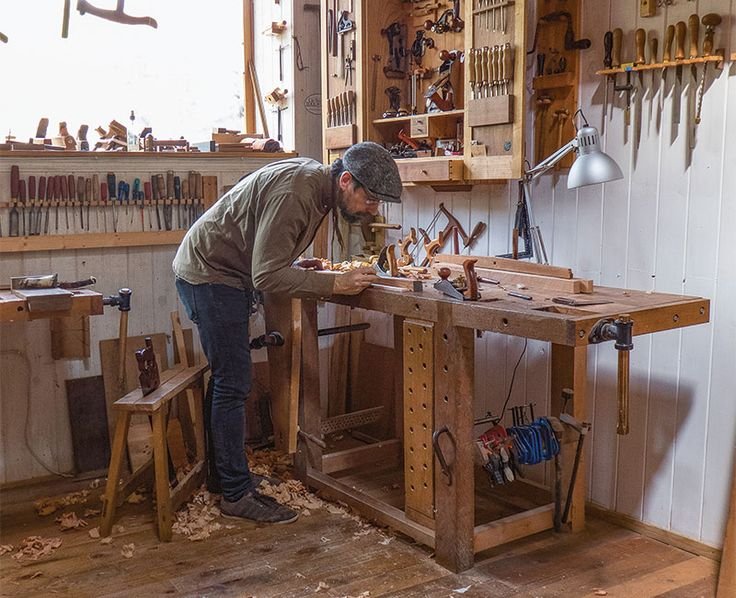The Allure of Advanced Routing
Alright, pull up a chair and grab your coffee—let me tell you a little something about my adventures in woodworking. It’s been a wild ride, to say the least, and if you’ve ever dabbled in this craft, you know that not every project goes exactly as you planned. There’s a certain beauty in that chaos, though, and I wouldn’t trade those moments for anything.
So, a while back, I decided I wanted to tackle something a bit advanced—routing. Now, I’ve always had a soft spot for wood; there’s this calming aroma when you start to cut into a nice piece of maple. It almost feels sacred, like you’re unlocking something hidden inside that you didn’t know existed. But there’s a level of finesse to routing that I just hadn’t quite nailed yet. Let’s just say I learned a few things the hard way.
The Router: My New Best Friend (and Worst Enemy)
I picked up a Bosch 1617EVSPK router—it’s got a nice weight to it, and that soft hum when it starts up? There’s just something about that sound that makes your heart race a little. I felt like a kid going to his first baseball game, all giddy with excitement. But let me tell you, I was not fully prepared for how finicky this tool can be.
I remember the first time I set everything up in the garage, feeling like some kind of woodworking wizard. The plan was simple: I wanted to create some decorative edge profiles for a bookshelf I’d been dreaming about. I’d bought this gorgeous piece of walnut—it’s dark and rich, and when I ran my fingers along the grain, it practically whispered, “Let’s make something beautiful.”
But then came the reality check.
I flicked the switch on that router, and WHOA—what had I done? The first pass was like watching a horror movie unfold in slow motion. I’d set my depth way too deep—wood shavings were flying everywhere, and the router was screaming as if it was protesting the abuse. I thought I was going to ruin that beautiful walnut and potentially injure myself in the process. Moments like that really put the fear of God in you. Let me tell you, I almost packed it in right then and there.
All Good Plans…
I took a breather and had some more coffee. Sitting there, I watched the sun casting shadows in the garage, and I realized I needed to dial it back a notch. I went back to the drawing board—literally. I sketched out a plan, did some research, and figured I could use a shallower cut. The router was supposed to be my best friend, not my adversary, right?
The next day, I approached the project with newfound resolve. I took my time, and I practiced on some scrap wood first. Oh, the difference that made! It was like the clouds parted and the sun started shining. The sound of the router became a melody instead of a battle cry.
And wouldn’t you know it, when I finally went back to that walnut, it worked like a charm. The edge was crisp and clean, just like I envisioned. I can’t even describe the rush when I pulled that piece off the bench and admired my work. I nearly laughed out loud—I felt like I’d conquered Mount Everest!
A Twist in the Tale
But, ah, there’s always a twist, isn’t there? I was so focused on getting the edges right that I forgot to think about the joints. Fast forward a few days, and I was assembling the bookshelf. I remember standing there in my garage, wood glue in one hand, clamps piled high in the other like some modern-day knight.
As I put those pieces together, it hit me like a freight train—those edges I’d spent hours perfecting didn’t align quite right, and next thing I knew, I had a gap that looked like a mouth grinning at me. It was maddening. I stood back, shaking my head, thinking this was the universe’s way of reminding me that I’m not as clever as I think I am.
Finding a Silver Lining
But here’s the thing: sometimes it’s those little imperfections that lend character—like life, you know? I took a moment, laughed at myself, and thought, “Well, that’s unique! No one else will have a bookshelf quite like this one!” I filled the gap with some epoxy and sanded it down.
In a strange twist, that work turned into a kind of sculpture. I mixed in some color to the epoxy and made it pop. When it all cured, I ended up with something with a story. That bookshelf became a conversation piece. People would come in, notice the flaw, and I’d laugh as I shared the tale. “There was a router and a walnut, and then…life happened!”
The Warm Takeaway
So, if there’s anything I want to share after all these rambling stories, it’s this: don’t sweat the small stuff. Whether it’s a poorly aligned joint or a router throwing a tantrum, just keep at it. I wish someone had clued me in on that when I started. Every slip-up, every gap—it’s a chance to learn, to innovate, and to make something that’s uniquely yours.
If you’re thinking about giving woodworking or routing a shot, just go for it. Don’t let the fear of failure hold you back. Honestly, it’s those mistakes that often create the most interesting stories in your craft. Embrace the chaos, have a cup of coffee, and dive right in. Who knows? You might just find that the thrill of it all is half the fun.


-120x120.jpeg)







